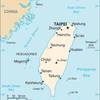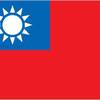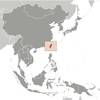Taiwan [+]Compare [E]dit [H]istory
Aliases: FormosaObject «Taiwan» was created due to
Add new object to «Taiwan» or move existing objects here.
Object «Taiwan» has attributes [Show empty attributes][Hide empty attributes]
| Attribute | Value |
|---|---|
| Geography | |
| Area | 35,980 km² |
| Continent | Asia |
| Land area | 32,260 km² |
| Water area | 3,720 km² |
| Land boundaries | 0 km |
| Border countries | Add |
| Coastline | 1566.3 km |
| Mean elevation | 1,150 m |
| Lowest point | 0 m |
| Highest point | 3,952 m |
| People | |
| Population | 23,603,049 |
| Official languages |
|
| Religion | Buddhist |
| Government | |
| Long country name | Add |
| Short country name | Taiwan |
| Long local name | Add |
| Short local name | Taiwan |
| Former name |
|
| Government type | Semi-presidential republic |
| Capital | Taipei |
| Economy | |
| GDP (PPP) | 1,189,000,000,000 USD |
| GDP (OER) | 572,600,000,000 USD |
| GDP (real growth rate) | 2.9 % |
| GDP - per capita (PPP) | 50,500 USD |
| Gross national saving | 34.9 % of GDP |
| Labor force | 11,780,000 |
| Unemployment rate | 3.8 % |
| Population below poverty line | 1.5 % |
| Budget revenues | 91,620,000,000 USD |
| Budget expenditures | 92,030,000,000 USD |
| Military expenditures | Add |
| Taxes and other revenues | 16 % of GDP |
| Budget surplus or deficit | -0.1 % of GDP |
| Public debt | 35.7 % of GDP |
| Inflation rate | 1.1 % |
| Central bank discount rate | 1.38 % |
| Commercial bank prime lending rate | 2.63 % |
| Stock of narrow money | 560,900,000,000 USD |
| Stock of broad money | 560,900,000,000 USD |
| Stock of domestic credit | 880,800,000,000 USD |
| Market value of publicly traded shares | 851,200,000,000 USD |
| Current account balance | 82,880,000,000 USD |
| Exports | 349,800,000,000 USD |
| Imports | 259,000,000,000 USD |
| Reserves of foreign exchange and gold | 456,700,000,000 USD |
| External debt | 181,900,000,000 USD |
| National currency | New Taiwan dollars |
| National currency (code) | TWD |
| National currency (symbol) | NT$ |
| National currency rate to USD | 30.68 |
First inhabited by Austronesian people, Taiwan became home to Han immigrants beginning in the late Ming Dynasty (17th century). In 1895, military defeat forced China's Qing Dynasty to cede Taiwan to Japan, which then governed Taiwan for 50 years. Taiwan came under Chinese Nationalist (Kuomintang, KMT) control after World War II. With the communist victory in the Chinese civil war in 1949, the Nationalist-controlled Republic of China government and 2 million Nationalists fled to Taiwan and continued to claim to be the legitimate government for mainland China and Taiwan based on a 1947 Constitution drawn up for all of China. Until 1987, however, the Nationalist government ruled Taiwan under a civil war martial law declaration dating to 1948. Beginning in the 1970s, Nationalist authorities gradually began to incorporate the native population into the governing structure beyond the local level. The democratization process expanded rapidly in the 1980s, leading to the then illegal founding of Taiwan’s first opposition party (the Democratic Progressive Party or DPP) in 1986 and the lifting of martial law the following year. Taiwan held legislative elections in 1992, the first in over forty years, and its first direct presidential election in 1996. In the 2000 presidential elections, Taiwan underwent its first peaceful transfer of power with the KMT loss to the DPP and afterwards experienced two additional democratic transfers of power in 2008 and 2016. Throughout this period, the island prospered, became one of East Asia's economic "Tigers," and after 2000 became a major investor in mainland China as cross-Strait ties matured. The dominant political issues continue to be economic reform and growth as well as management of sensitive relations between Taiwan and China.
Similar objects
Most often compared with
Everyone can something to edit or add.
There was one edit, no edits waiting approval. Last edited by everette34(9367), Sep 16, 2019 (58 fields were changed)
Help · Contact us · Disclaimer · Contributors · Developers · Donate


